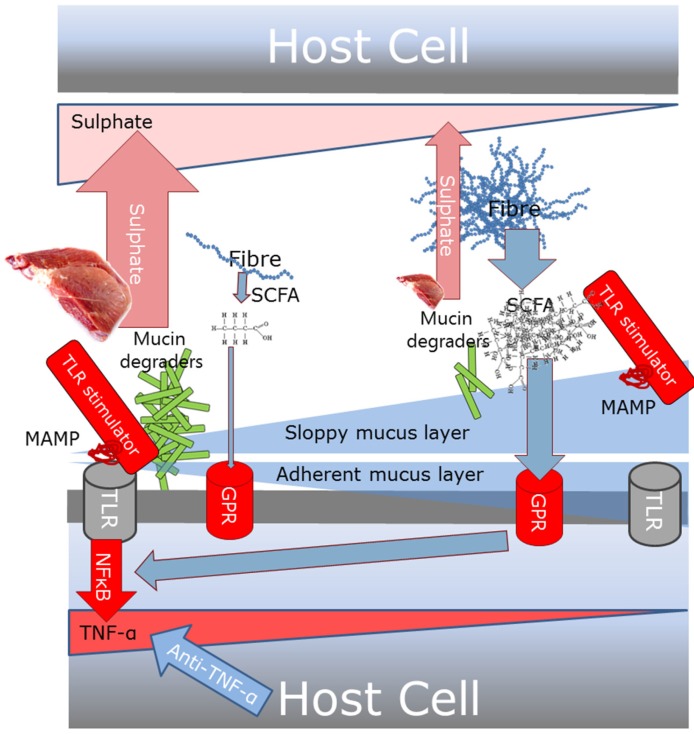Figure 2.
Potential mechanism whereby Western diet high in meat and low in fibre may impact gut inflammation and potentially anti-TNF treatment response. If the enteric mucus layer is thick and intact, the TLR-stimulating MAMP-containing bacteria will be contained in the sloppy mucus layer. If it is thin or disrupted, these bacteria will enter the adherent mucus layer and elicit their TLR stimulation. Dietary sulphate, from e.g. meat, weakens them. Apart from degrading the mucus layer and thereby increasing the potential for MAMP-TLR stimulation, mucus-degrading bacteria release sulphate during the degradation process. A high level of dietary fibres leads to a high level of short chain fatty acids (SCFAs), which stimulates the G protein-coupled receptors (GPRs), thereby counteracting the induction of TNF-α production. Supplementation of a plant fibre diet, as part of the theory, stimulates the mucus layer [41,70].

